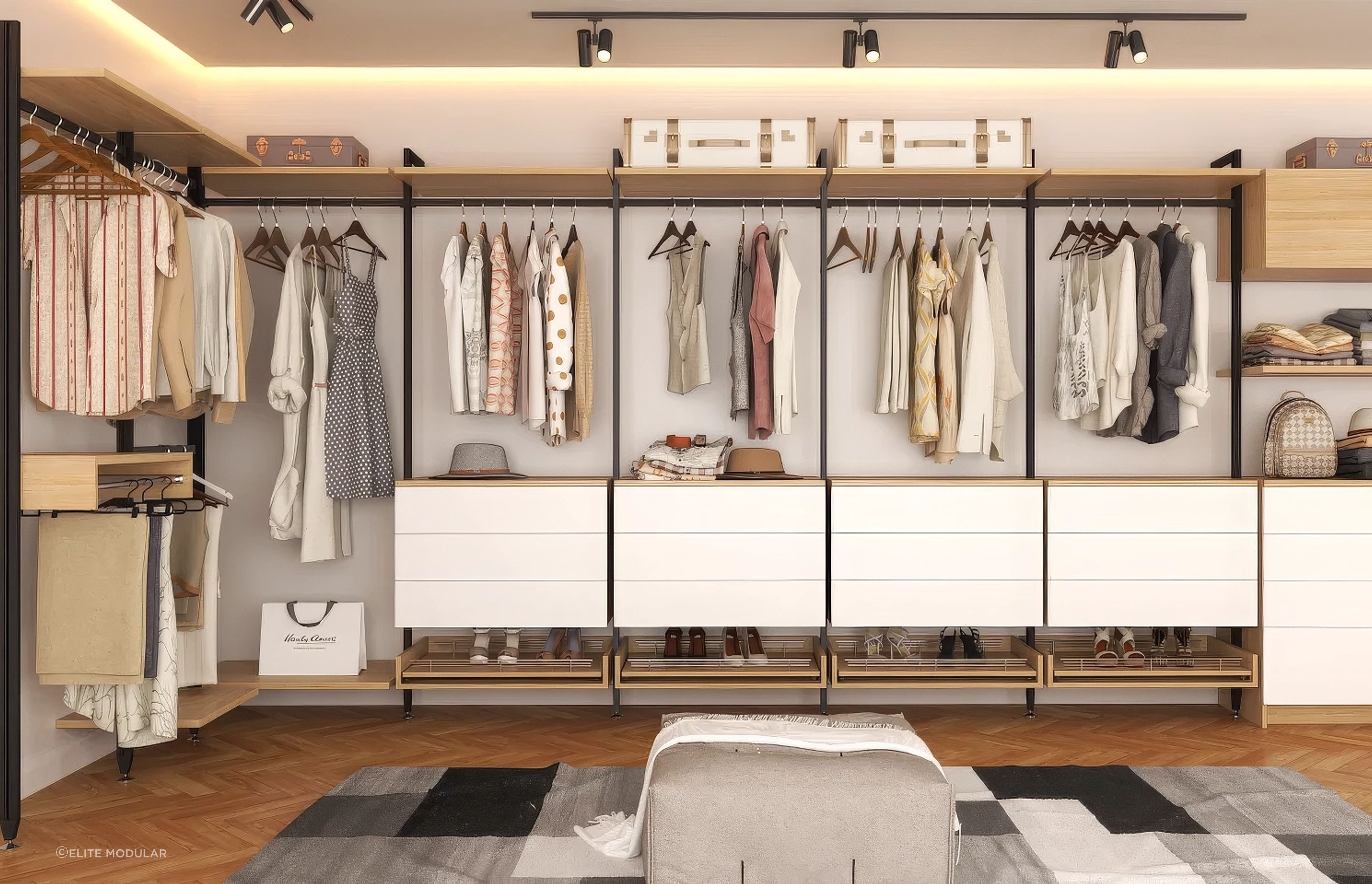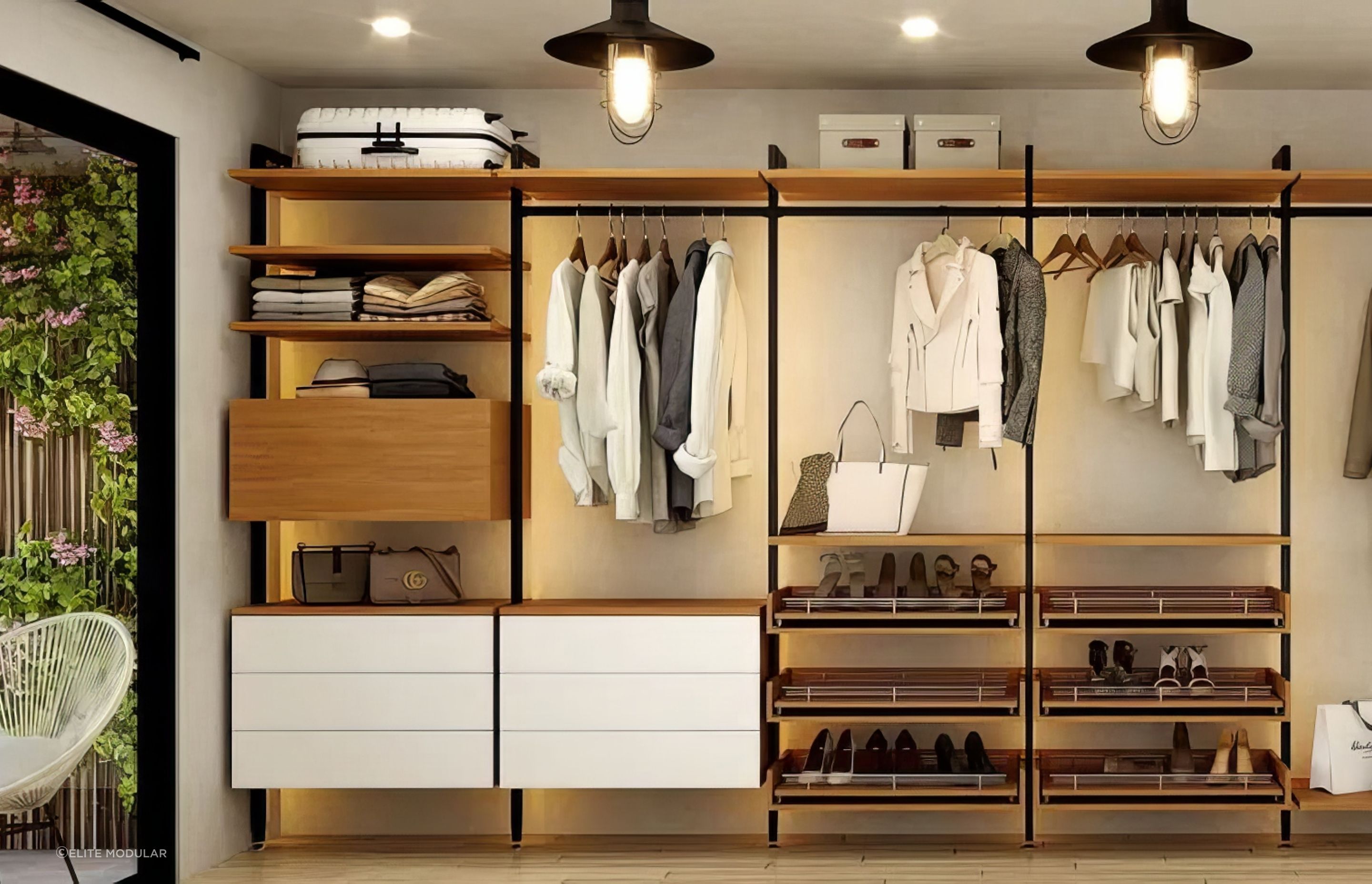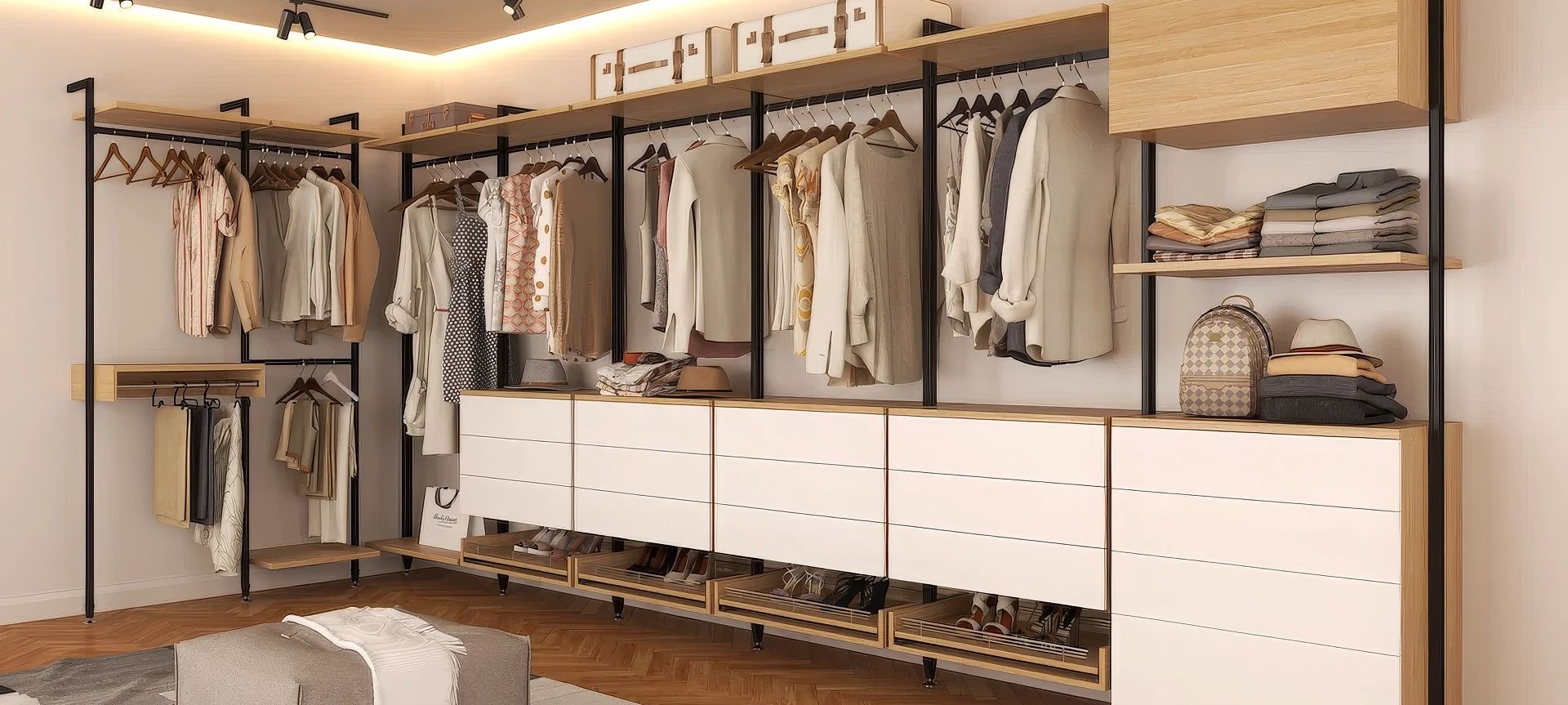Step 1: Empty and Clean Your Wardrobe
Start Fresh
Begin by removing every item from your wardrobe. This includes clothes, shoes, accessories, hangers, and any storage bins or baskets. Emptying your closet provides a clear view of the available space and allows you to start with a blank canvas.
Deep Clean
With everything out of the wardrobe, take the time to clean thoroughly. Dust shelves, rods, and corners. Vacuum or sweep the floor, and wipe down all surfaces with an all-purpose cleaner. This ensures that your clothes go back into a pristine environment.

Step 2: Declutter Ruthlessly
Sort Through Your Items
As you remove items, sort them into categories: keep, donate, sell, and discard. This process is crucial for eliminating unnecessary clutter and making room for the items you truly love and use.
Professional organiser Marie Kondo recommends asking yourself if each item sparks joy. If it doesn’t, it’s time to let it go.
Tips for Decluttering
Use these factors to sort through your items.
- Frequency of Use: If you haven’t worn an item in the past year, consider donating or selling it.
- Condition: Discard items that are damaged or worn out beyond repair.
- Fit and Style: Keep items that fit well and match your current style. Donate or sell those that don’t.

Step 3: Categorise and Sort
Group Similar Items
Once you’ve decluttered, categorise the remaining items. Common categories include:
- Tops (shirts, blouses, sweaters)
- Bottoms (pants, skirts, shorts)
- Dresses and suits
- Outerwear (coats, jackets)
- Shoes
- Accessories (belts, scarves, hats)
- Undergarments and sleepwear
Seasonal Organisation
Consider organising your wardrobe by season. Store off-season items in deep drawers or on higher shelves to keep them out of the way. This makes it easier to find what you need when you need it and keeps your everyday items accessible.

